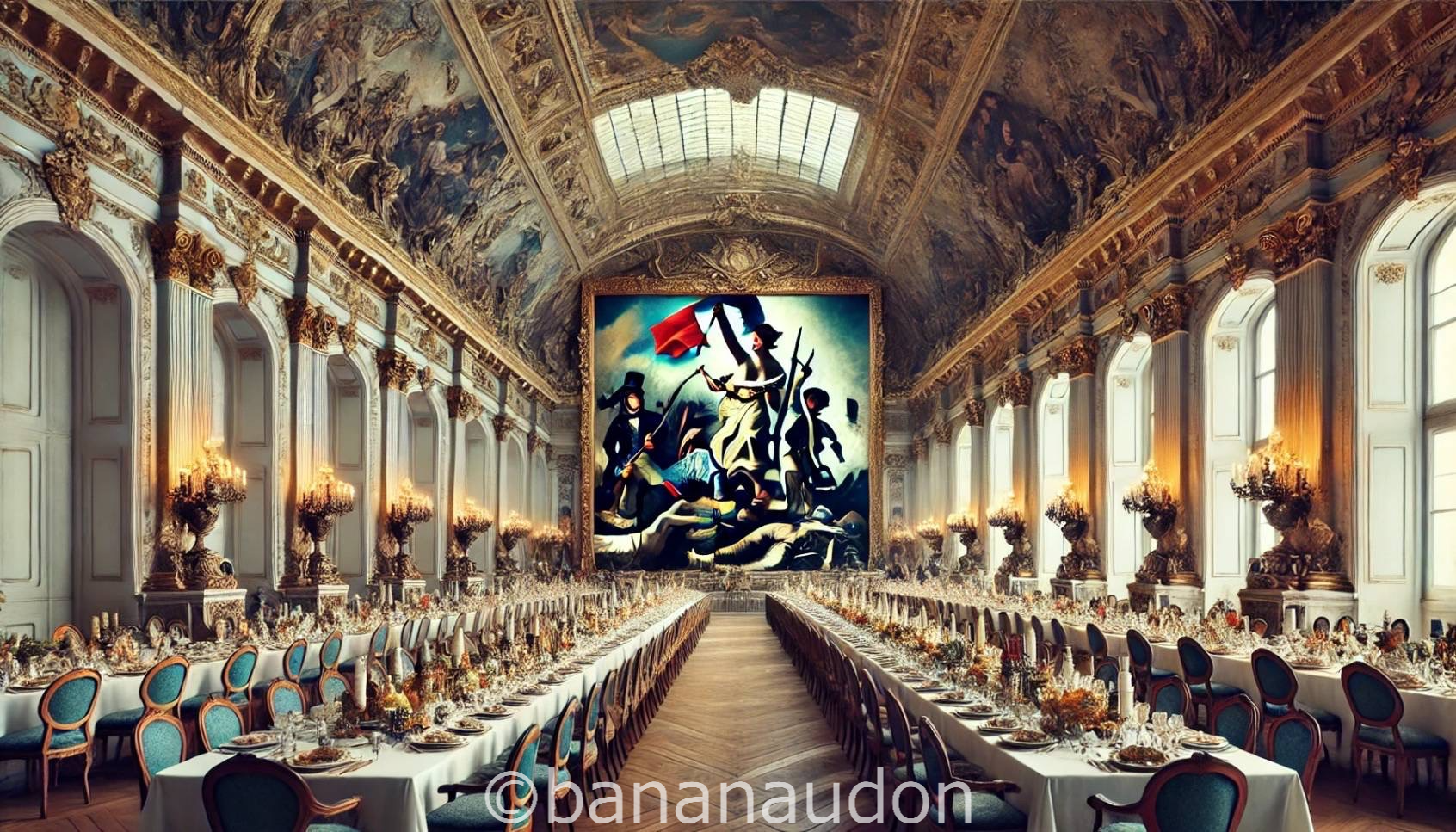Reinterpreting “Liberty Leading the People”: Revolution Amidst a Grand Banquet
2025.02.03投稿
広告

Eugène Delacroix’s famous painting “Liberty Leading the People” is reimagined in a lavish palace setting.
This reinterpretation questions how revolutionary ideals are consumed and turned into tools of power.
We will explore the intention behind this reinterpretation while considering historical context.
First Impressions and Reflections
This reinterpretation places “Liberty Leading the People” by Delacroix in a radically different setting, creating a striking contrast.
This iconic painting, symbolizing the French Revolution, is now displayed in an opulent palace hall, in front of an extravagant banquet table.
The juxtaposition of a revolutionary symbol with aristocratic grandeur underscores a historical and political paradox.
It appears as if the revolutionary spirit has been absorbed and commodified by the elite.
Do revolutionary ideals truly belong to the people, or are they merely decorative tools for the powerful?
Historical Context of “Liberty Leading the People”
Basic Information
- Title: Liberty Leading the People
- Artist: Eugène Delacroix
- Date: 1830
- Style: Romanticism
- Key Features:
- Allegorical representation of Liberty
- Scene inspired by the July Revolution of 1830
- Unity of social classes against oppression
- Dramatic use of light and shadow
Historical Background
This painting depicts the July Revolution of 1830, which led to the abdication of King Charles X and the rise of Louis-Philippe as “King of the French.”
Delacroix infused the painting with allegorical elements, portraying Liberty as an iconic figure leading the people to uprising.
Analysis of the Reinterpretation
In this new vision, the fervor of revolution and the spirit of the people are transplanted into an opulent setting.
A Revolution Turned into Ornamentation
- The battlefield is replaced by a golden palace.
- This transformation suggests that revolutionary ideals have ceased to be a movement of the people and have instead become tools of power.
Contrast Between Banquet and Popular Struggle
- The lavish banquet recalls the aristocracy that the revolution opposed.
- A symbol of struggle is transformed into an elite collector’s item.
Conclusion
This reinterpretation highlights a powerful paradox: revolutions often begin with the people but end up in the hands of the elite.
It encourages reflection on how symbols of rebellion are appropriated by those in power.
